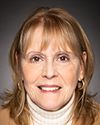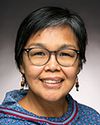[Member spoke in Inuktitut, interpreted as follows:]
Thank you, Madam Chair.
I want to thank all the witnesses who have come to give their statements here today. I am liking what I am hearing.
Ella Estey, I thank you and I am proud of you.
To the students who are here from Nunavut Sivuniksavut, welcome. Education is very important to all of us here. I am glad to see you present here today, especially when we are dealing with a bill that pertains to education.
I'm proud of you for using two languages—the first language. You stated that, if Inuit are going to succeed in graduating from classes and if we want to see more graduates, we have to include the mother tongue in the education curriculum. This is something that has been a concern for us for a very long time. I'm listening to what you are saying today: The education system is from the Alberta education system. The words you said are very strong.
Now, I want to ask you this: While you are still going to school, do you have an idea of which needs have to be met? Do you have resources in place, or do you need more resources to ensure we see more graduates? Has the Department of Education been approached about the need for resources? What is there? Are you able to answer this question?
Thank you.




